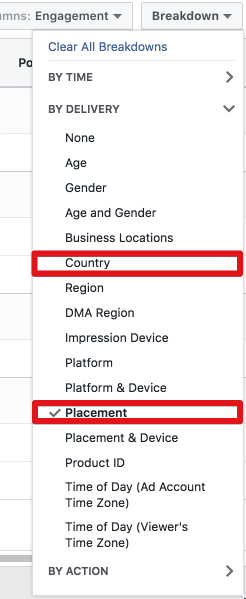When people are on Facebook they’re usually reviewing information shared by friends, entertainment and news sites and sponsored content from brands.
The sponsored content on Facebook is effective, but eventually hits a wall. Native advertising, such as Taboola, is a solution to this problem.
This is great news for agencies—Taboola sponsored content shows up on many of the news sites, blogs and apps that the Facebook audience is already used to interacting with, and it’s easy to adapt an already existing Facebook campaign to Taboola.
My software company, Brax helps you scale, automate, and simplify your native advertising in one central place. Several customers have used Brax to take successful Facebook campaigns and launch them on Taboola to hit growth goals using this playbook as a starting point.
If you have a social campaign that is doing well on Facebook, this will guide will help you replicate your campaign for native advertising.
38 Case Studies From Brands That Have Succeeded With Taboola
First, gather Facebook data to select your best campaign.
Facebook Ad Manager offers two reports that serve as an informed guide to bidding on native advertising. Inside the ‘Ads Manager’, under ‘Campaigns’, ‘Ad Sets’ or ‘Ads’: click on ‘Breakdown’ and select ‘Placement’ or ‘Country.’

The ‘Placement’ report allows you to see cost per click (CPC) data for both ‘Desktop’ and ‘Mobile’ devices separately. You can then use the CPC data for desktop and mobile as a guide for your bid on native – they should be similar, less, more?.
It is also a great report to use to discover which of your campaigns are best for your native advertising campaign. Start with those that have the lowest CPC.
Once you’ve selected the Facebook campaign you’d like to adapt and obtained your goal CPC, it’s time to look at targeting. The concept is similar to Facebook at the ‘ad group’ level—When you set up campaigns on native advertising networks create separate campaigns for each location and device combination such as us-desktop, us-mobile, ca-desktop, ca-mobile, etc.
To summarize:
- View Facebook’s ‘Placement’ report for insights into your goal CPC
- View Facebook’s ‘Placement’ report for insights into how to allocate your CPC by ‘Desktop’ and ‘Mobile traffic
- View Facebook’s ‘Placement’ report to determine which campaign is best to adapt for native
- View Facebook’s ‘Placement’ and ‘Country’ reports for device and location performance. When you launch your native campaign, create separate campaigns for each successful device and location combination.
Second, target your Facebook campaign on a native platform.

Facebook targeting revolves around interests and demographics, while native advertising targeting has traditionally relied on location, device and the site or app where your ad runs. While some native advertising platforms still operate this way, Taboola Data Marketplace has opened up native advertising to interest targeting and granular audience segments on the open web.
In most cases, native advertising doesn’t have ad groups; so the settings are at the campaign level. Taboola makes this easier with Even Traffic Allocation, which allows you to unlock the best performing creatives for your campaign. If you’re coming from Facebook for the first time, I highly recommend separating your native campaigns by geolocation, device type and operating system (for mobile).
When starting a native campaign, A/B test using a first campaign at the same cost per click (CPC) as Facebook, and a second campaign at half the CPC of Facebook. Optimize both campaigns to help identify the right bid for different sites quickly. You can use Taboola’s by-site bid-boosting feature to optimize your bids according to your goals.
For each of your campaign’s landing pages; create a group of campaigns to optimize for the best performer. Site performance will vary based on the content; read the “Optimization Differences” section below for proper data tracking to bucket sites.
To summarize:
- Focus your first adapted Facebook campaign on location, device and site or app targeting on native
- Separate your native campaign by geolocation and device type, and on mobile, operating system
- Your first native campaign should A/B test your current Facebook CPC against half of your Facebook CPC
- After your native A/B test, optimize by site
- Create a group of native campaigns for each Facebook landing page to optimize for the best performer
Third, adjust your creatives.

The biggest difference between Facebook and Native advertising creatives is that there are fewer assets for native ads. Most native ads do not have a long description field, and typically, there is only a headline, image and call to action.
First, use your top three ads from Facebook based on the earlier analysis. Second, use the headline to target your audience. For example, if you want to appeal to Star Trek fans, make a trekkie reference in the headline.
Small images are a common mistake, make sure to use large images with a minimum size of 600×500 pixels, or double that size when available.
Check Taboola Trends for insights on how to increase CTR with different image attributes along with other photo best practices.
To summarize:
- Use your top three Facebook ads for your first native campaign
- Call out your target audience in your native headline
- Use large images for the best results
Fourth, track your performance post-click

Facebook optimization revolves around creative and interests targeting; while native advertising focuses on optimization by creative and site targeting.
Typically, most companies will start promoting content using a “run of network” campaign that includes all publishers in the native ad network. Once a week of initial data is collected; the next step is then optimizing by site and creative.
To be successful in optimizing by creative, you must setup your own analytics tracking to collect post-click data at the campaign, ad and site level. This is absolutely critical to success for anyone running native advertising campaigns.
Here is an example of a UTM code that will help you track at that granularity using Google Analytics:
utm_source=taboola&utm_campaign=us-desktop-taboola-content&utm_medium={site}&utm_content={campaign_item_id}
The tracking code above will allow you to track and optimize the following:
- Us-desktop-taboola-content = Campaign name with location + device type
- {site} = Publisher site
- {campaign_item_id} = Ad ID
With this tracking in place, it will now be possible for you to match any Google Analytics data such as e-commerce sales, goal completions or engagement with your native advertising spend for better insights at the campaign, ad and site level.
To summarize:
- Recognize that optimization on native happens by creative, not campaign
- Set up your own analytics tracking to collect post-click data at the campaign, ad and site level
Finally, use retargeting in your native campaigns.

Generally, I find people are unaware of or don’t know where to start in setting up an effective retargeting campaign with native advertising. This is a key area to boost ROI for other channels or retarget people from Facebook who made it to a certain engagement point on your site with native advertising, but may not have converted.
These are two example “recipes” I’ve seen that work to trigger successful retargeting campaigns in native:
- Product ad retargeting for ecommerce
- Customer review or testimonial of product or service
For example, you could use Google Tag Manager to send Facebook events, and then reuse those events to trigger your Taboola retargeting pixel to fire.
Migrating a campaign from Facebook to Native Advertising takes requires a slight change in mindset, from campaign setup to optimization. Once you’ve gotten over those initial hurdles, the final challenge is tracking the data to get meaningful optimization insights for your campaign.
You are able to reuse many of the campaign success metrics for Facebook campaigns on native platforms; you just might find it takes a bit of work to set up. Hopefully this guide has helped bridge the gap for you.